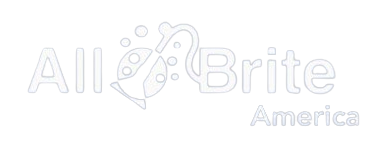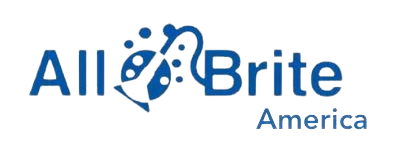The All Brite Knowledge Base
Find answers to the most commonly asked questions about our services.
Air Duct Cleaning Questions Answered
-
Why is air duct cleaning important?
Air duct cleaning is essential because, over time, dust, dirt, pet dander, pollen, mold, and other contaminants can accumulate in your HVAC system's ductwork. When the system is in operation, these particles can be circulated throughout your home, leading to poor indoor air quality. Air duct cleaning removes these contaminants, improving indoor air quality and creating a healthier living environment. It can also enhance the efficiency and lifespan of your HVAC system, potentially lowering energy bills.
-
How often should I have my air ducts cleaned?
The frequency of air duct cleaning depends on several factors, including the type of HVAC system you have, the local climate, the presence of pets, and any allergies in your household. As a general guideline, most homes benefit from air duct cleaning every 3–5 years. However, if you notice visible mold growth, excessive dust, or a musty odor coming from your vents, you should consider scheduling cleaning sooner. Consult with a professional to determine the best cleaning schedule for your specific circumstances.
-
What does the air duct cleaning process involve?
The air duct cleaning process typically includes several steps:
- Inspection: A thorough inspection of your HVAC system is conducted to assess the extent of contamination.
- Preparation: The area around vents and duct openings is sealed to prevent debris from escaping during cleaning.
- Cleaning: Specialized equipment, such as high-powered vacuums and brushes, is used to dislodge and remove contaminants from the ductwork.
- Sanitization: In some cases, ducts may be treated with antimicrobial agents to disinfect and prevent mold growth.
- Final inspection: After cleaning, a final inspection ensures that all contaminants have been removed and the system is functioning correctly.
-
Can air duct cleaning help with energy savings?
Yes, air duct cleaning can lead to energy savings. When your ducts are clogged with dust, debris, and contaminants, your HVAC system has to work harder to maintain desired temperatures. Clean ducts promote better airflow, allowing your system to operate more efficiently. This increased efficiency can result in lower energy consumption and reduced utility bills. Additionally, a cleaner system is less prone to breakdowns and can have an extended lifespan, saving you money on costly repairs and replacements over time.
-
Is air duct cleaning necessary if I have a new HVAC system?
Yes, air duct cleaning is still beneficial with a new HVAC system. While a new system starts with clean ducts, it's essential to maintain their cleanliness to ensure optimal performance and indoor air quality. Over time, dust and debris can accumulate in the ductwork, affecting both air quality and energy efficiency. Having your ducts cleaned periodically, even with a new system, is a proactive measure to keep your home's air fresh and your HVAC system running efficiently.
Chimney Cleaning Questions Answered
-
How often should I schedule chimney cleaning for my home?
Chimney cleaning frequency depends on usage. In general, an annual cleaning is recommended, but if you use your fireplace frequently, more frequent cleaning may be necessary to prevent buildup.
-
What are the potential dangers of neglecting chimney cleaning?
Neglecting chimney cleaning can lead to the accumulation of creosote, a flammable substance, increasing the risk of chimney fires. It can also result in poor ventilation, leading to carbon monoxide exposure.
-
Do you provide any additional chimney maintenance services apart from cleaning?
Yes, we offer chimney inspections, repairs, and maintenance services to ensure your chimney is in top condition. Our goal is to keep your chimney both clean and safe.
-
How long does a typical chimney cleaning appointment take?
The duration of a chimney cleaning appointment can vary depending on the extent of buildup and the type of chimney. On average, it takes about 1 to 2 hours, but our technicians will provide a more accurate estimate on-site.
-
What sets your chimney cleaning service apart from competitors in Lyons?
Our chimney cleaning service at All Brite stands out due to our skilled professionals, use of advanced equipment, and dedication to safety. We prioritize thoroughness and customer satisfaction, ensuring your chimney is not only clean but also in optimal working condition.
Commercial Carpet Cleaning Questions Answered
-
How often should I schedule professional commercial carpet cleaning?
The frequency of professional carpet cleaning for commercial spaces depends on factors like foot traffic and usage. In general, most businesses benefit from quarterly to biannual cleanings to maintain a clean and professional appearance.
-
What are some tips to extend the life of my commercial carpet?
To prolong the lifespan of your commercial carpet, consider using entry mats and scheduling regular vacuuming and professional cleanings. Using furniture pads and rearranging furniture periodically can also help prevent wear.
-
What should I do to prepare for a professional carpet cleaning service?
To prepare for professional cleaning, clear the carpeted areas of any furniture or obstacles. Inform us about any specific stains or areas of concern. Additionally, ensure proper ventilation during and after cleaning to facilitate drying.
-
Can commercial carpet cleaning improve indoor air quality in my workspace?
Yes, professional carpet cleaning can significantly improve indoor air quality by removing dust, allergens, and pollutants trapped in the carpet fibers. Cleaner air contributes to a healthier and more productive environment for employees and clients.
-
What are some common challenges in commercial carpet maintenance, and how can I address them?
Common challenges include high traffic wear, stubborn stains, and odors. To address these issues, consider using carpet runners in high-traffic areas, promptly attending to spills and stains, and using professional cleaning services that specialize in commercial carpet care. Regular maintenance and deep cleaning are essential for optimal carpet longevity and appearance.
Dryer Duct Cleaning Questions Answered
-
How often should I have my dryer duct cleaned to keep it running smoothly?
To maintain efficient dryer performance and prevent potential fire hazards, it's advisable to have your dryer duct cleaned at least once a year. If you notice longer drying times or reduced performance, consider more frequent cleanings.
-
What are some tips to keep my dryer running smoothly between cleanings?
To prevent issues, regularly clean the lint filter before each load, ensure the dryer is properly vented to the outside, and avoid overloading the dryer. Additionally, inspect the duct and vent for blockages and ensure there are no kinks in the duct.
-
How can I avoid common issues with my dryer duct system?
Common issues include lint buildup, blockages, and poor ventilation. To avoid these problems, always clean the lint filter, avoid using damaged ducts or vents, and keep the area around the dryer clear of clutter.
-
What are the signs that my dryer duct may need cleaning or maintenance?
Signs of a clogged or malfunctioning dryer duct include longer drying times, overheating, a burning smell, or excessive lint buildup around the dryer or vent outlet. If you observe any of these signs, it's essential to address them promptly.
-
Why is professional dryer duct cleaning necessary, and how can it benefit my home?
Professional dryer duct cleaning is necessary to remove accumulated lint, debris, and blockages that can hinder airflow and pose a fire hazard. Benefits include improved dryer efficiency, reduced energy consumption, and enhanced safety by preventing potential fires.
Restaurant Fire Prevention Questions Answered
-
Why is regular kitchen hood and duct cleaning essential for fire prevention in restaurants?
Regular cleaning of kitchen hoods and ducts removes grease buildup, a significant fire hazard. It helps maintain a clean, safe kitchen environment and prevents grease fires.
-
What role does proper air duct cleaning play in restaurant fire prevention?
Air duct cleaning is crucial in preventing the spread of contaminants and grease-laden vapors throughout the restaurant. Clean ducts ensure that the exhaust system functions efficiently, reducing fire risks.
-
How often should a restaurant schedule professional kitchen hood and duct cleaning to maximize fire safety?
Professional kitchen hood and duct cleaning should be scheduled every three to six months, depending on cooking volume. This frequency helps ensure consistent fire prevention.
-
Are there any additional fire prevention tips for restaurant owners and staff to follow?
Yes, in addition to cleaning services, restaurant owners and staff should regularly inspect and maintain kitchen equipment, keep flammable materials away from open flames, and conduct fire safety drills to ensure a swift and safe response in case of emergencies.
-
What proactive measures can restaurant owners take to enhance fire safety alongside professional services?
In addition to professional services, restaurant owners can implement measures such as installing fire suppression systems, ensuring the presence of functional fire extinguishers, conducting regular safety drills, and adhering to local fire safety regulations. These actions collectively contribute to a comprehensive fire safety strategy for the restaurant.
Commercial Restaurant Hood Cleaning Questions Answered
-
Why is regular restaurant hood cleaning crucial for fire safety and kitchen hygiene?
Regular hood cleaning removes grease buildup, a major fire hazard in commercial kitchens, and helps maintain a clean and safe cooking environment.
-
How often should I schedule professional restaurant hood cleaning services for my establishment?
Professional hood cleaning should typically be scheduled every three to six months, depending on the volume of cooking and the type of food being prepared.
-
What does the restaurant hood cleaning process entail, and how long does it take?
The cleaning process involves a thorough cleaning of the hood, filters, ductwork, and exhaust fan. The duration varies based on the size of the system but generally takes a few hours to complete.
-
What are the benefits of regular restaurant hood cleaning beyond fire prevention?
In addition to fire prevention, regular hood cleaning enhances kitchen ventilation, maintains appliance efficiency, improves indoor air quality, and extends the lifespan of kitchen equipment.
-
Can I perform any DIY or spot cleaning for my restaurant hood, or is professional cleaning always necessary?
While regular maintenance and spot cleaning can help, professional restaurant hood cleaning is essential to thoroughly remove grease buildup and ensure fire safety. Professional cleaning services have the equipment and expertise to address hidden and hard-to-reach areas within the hood and exhaust system.
Pressure Washing Cleaning Questions Answered
-
What is power washing and how does it work?
Power washing, also known as pressure washing, uses a high-pressure water spray to remove dirt, grime, mold, mildew, and other contaminants from surfaces. The force of the water, sometimes combined with cleaning agents, effectively cleans a variety of surfaces such as driveways, decks, sidewalks, and siding.
-
What surfaces can be cleaned with power washing?
Power washing can be used on a wide range of surfaces, including concrete driveways, patios, sidewalks, wooden decks, fences, brick walls, vinyl siding, and even outdoor furniture. It's important to use the appropriate pressure setting and nozzle to avoid damaging delicate surfaces.
-
Is power washing safe for my home’s exterior?
Yes, power washing is safe for most exterior surfaces when done correctly. Professional power washing services ensure that the right pressure and cleaning solutions are used for each specific surface to avoid damage. Delicate surfaces may require lower pressure settings or different cleaning methods.
-
How often should I schedule power washing for my property?
The frequency of power washing depends on several factors, including the climate, location, and type of surface. Generally, it's recommended to power wash your home's exterior once a year to maintain its appearance and prevent the buildup of dirt and mold. High-traffic areas or properties in humid climates may benefit from more frequent cleanings.
-
Can power washing remove all types of stains and buildup?
Power washing is highly effective at removing a variety of stains and buildup, including dirt, mold, mildew, algae, and even some types of paint. However, certain stubborn stains, like oil or rust, may require specialized cleaning solutions or additional treatments. Professional power washing services can assess and address these tougher stains.





